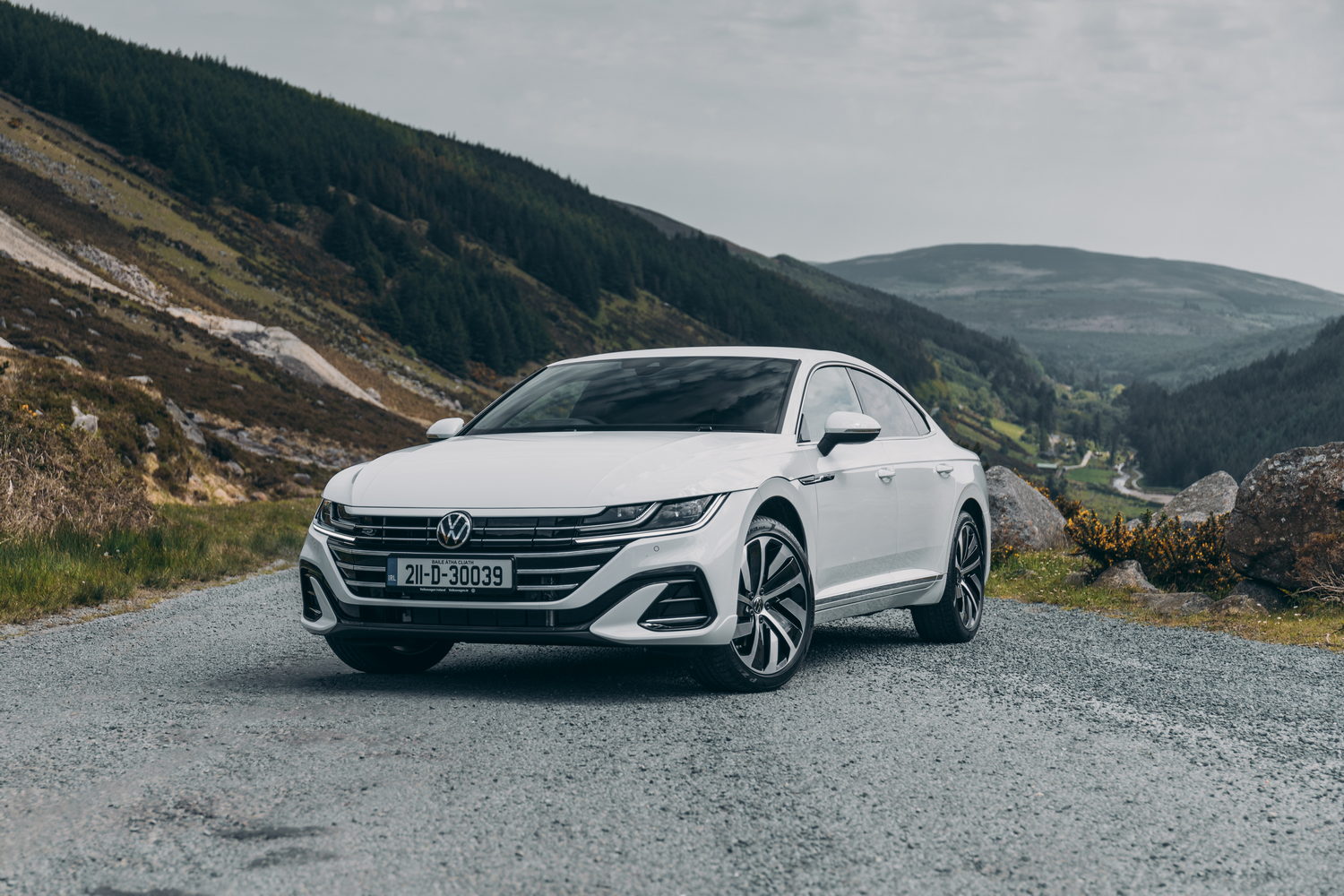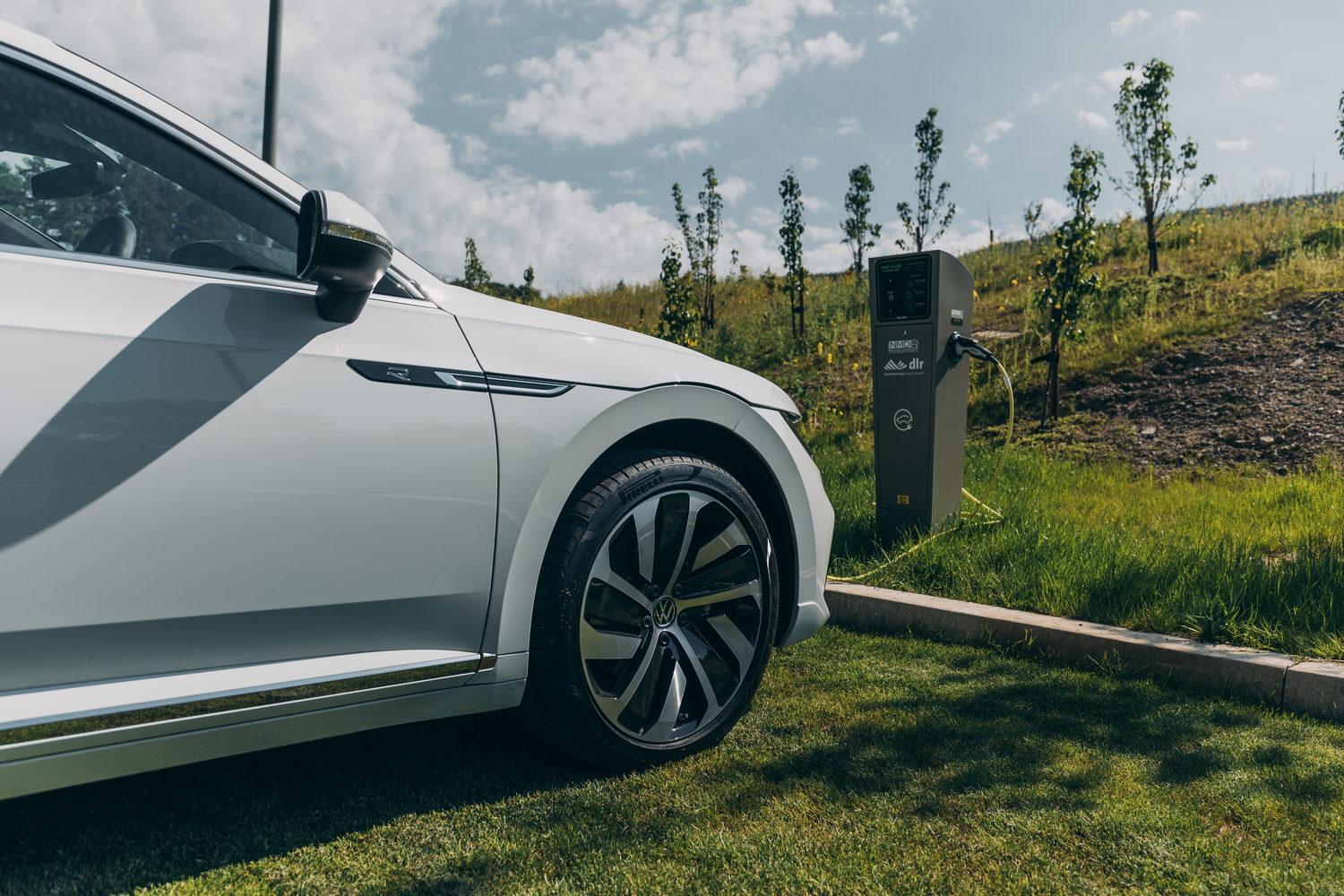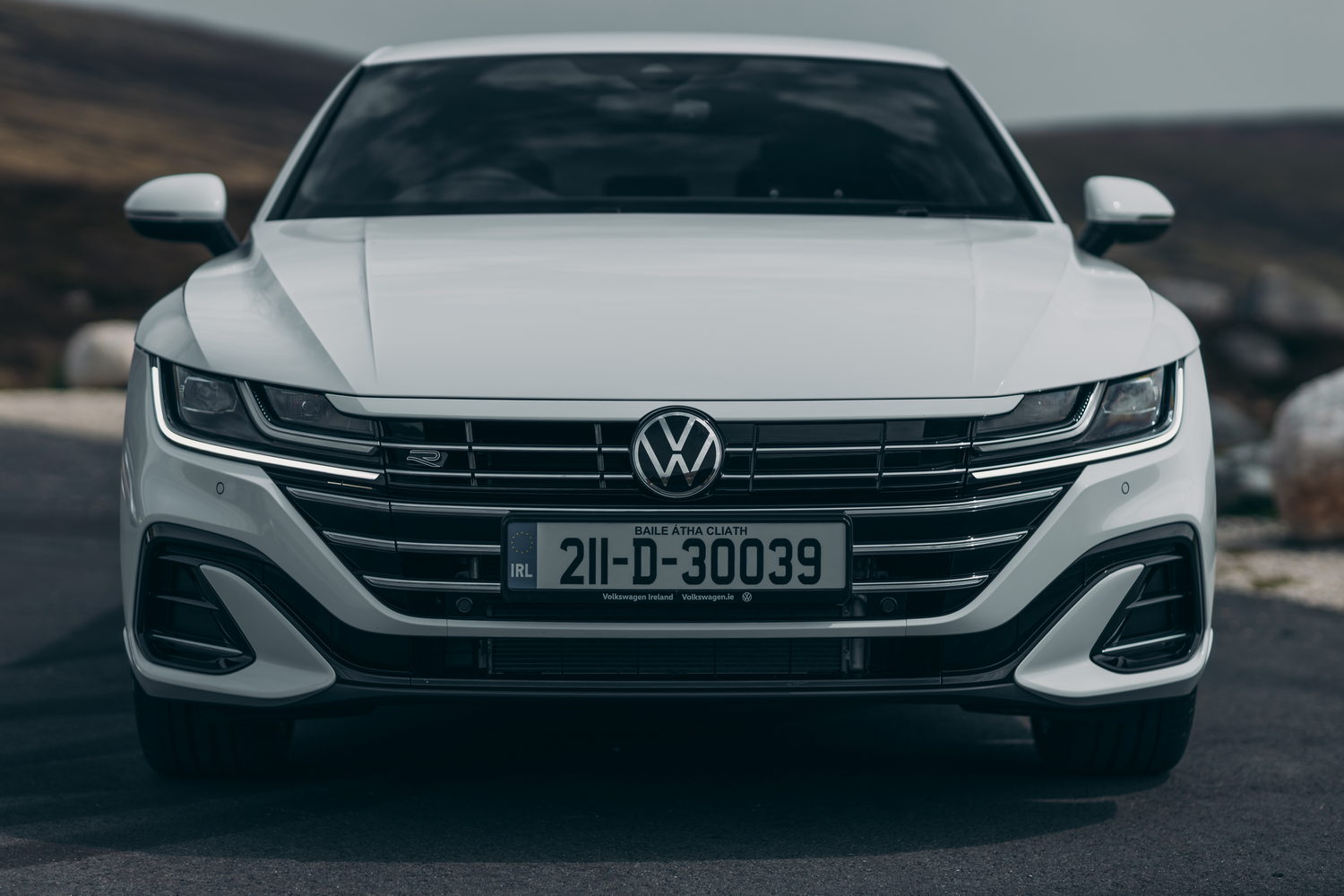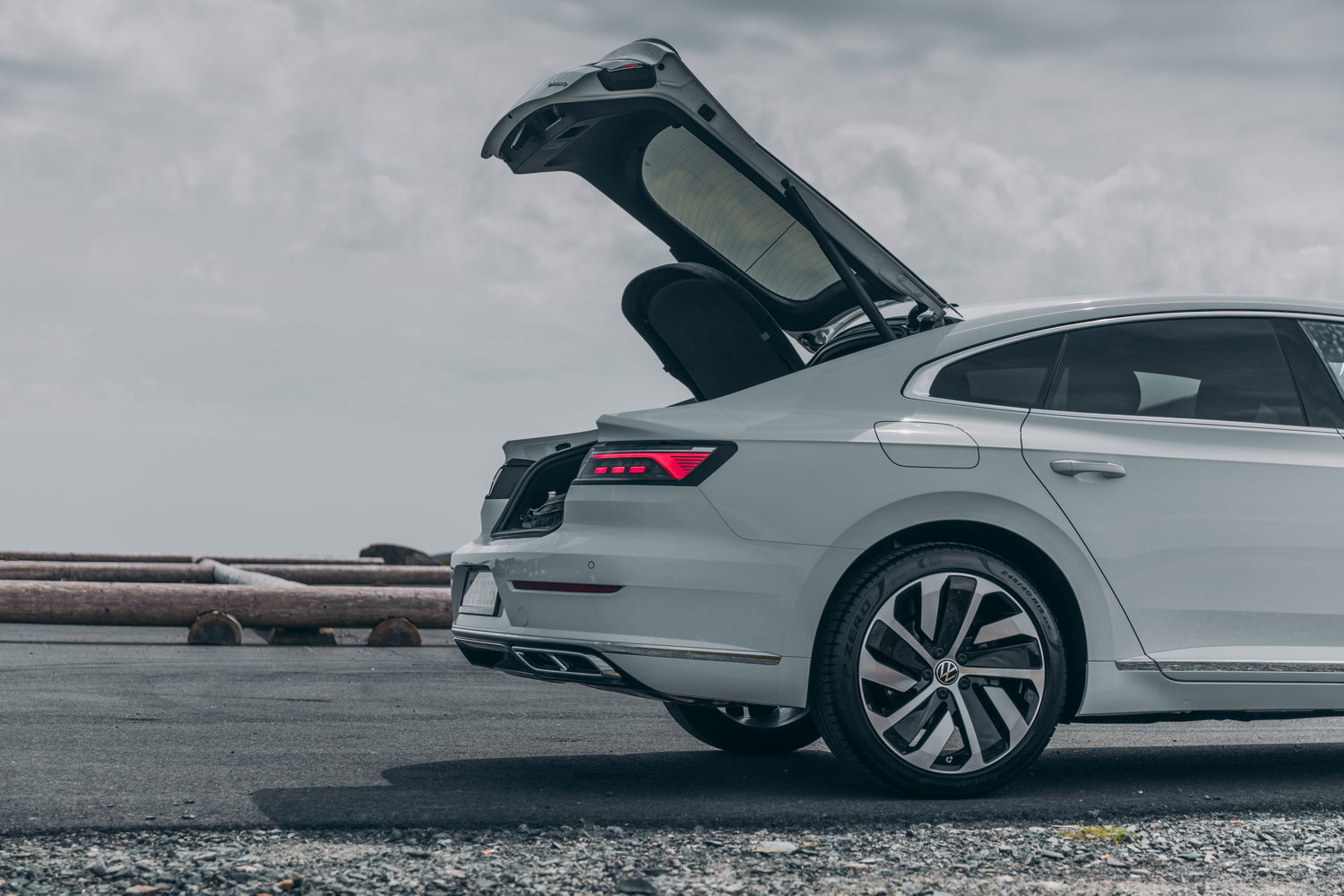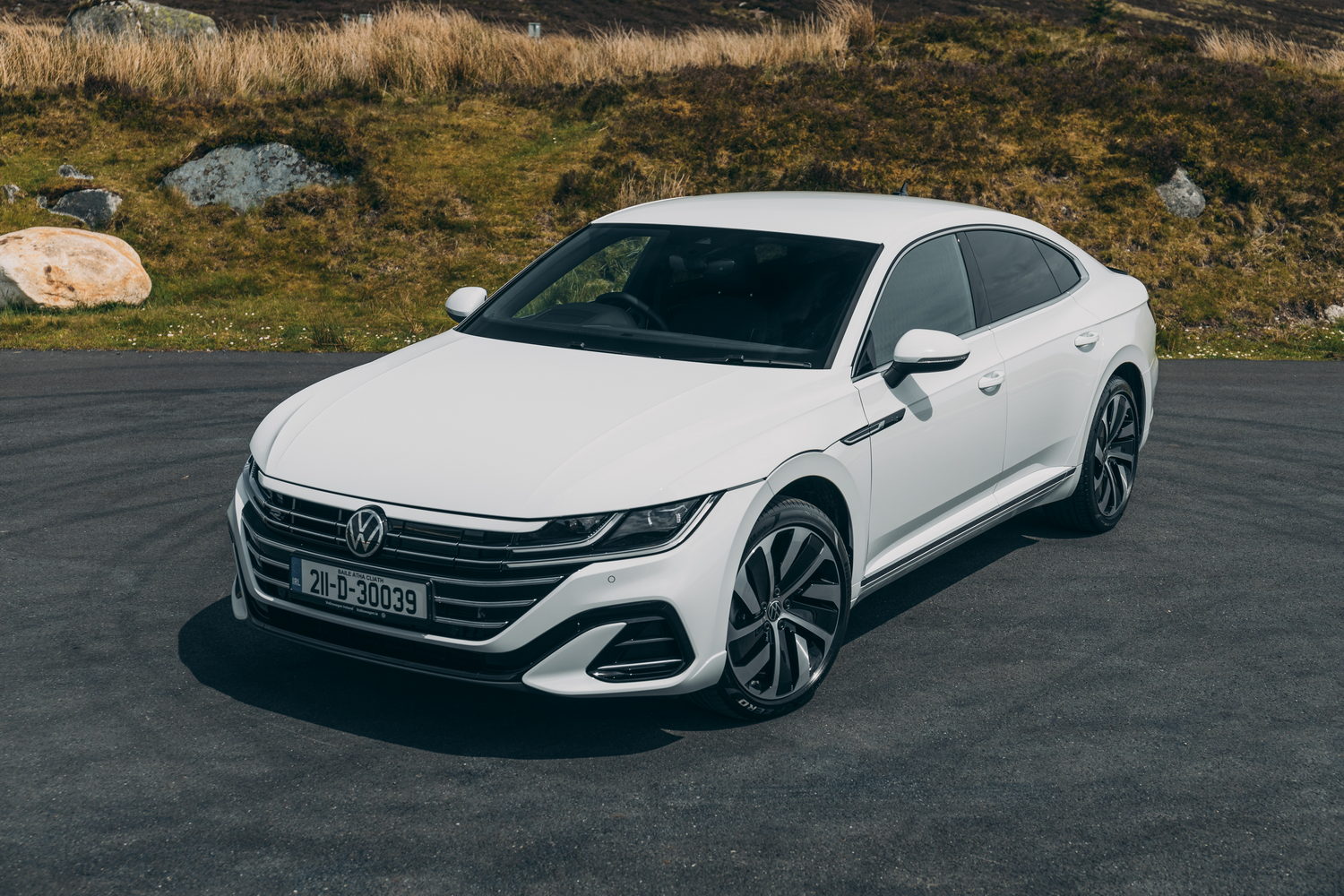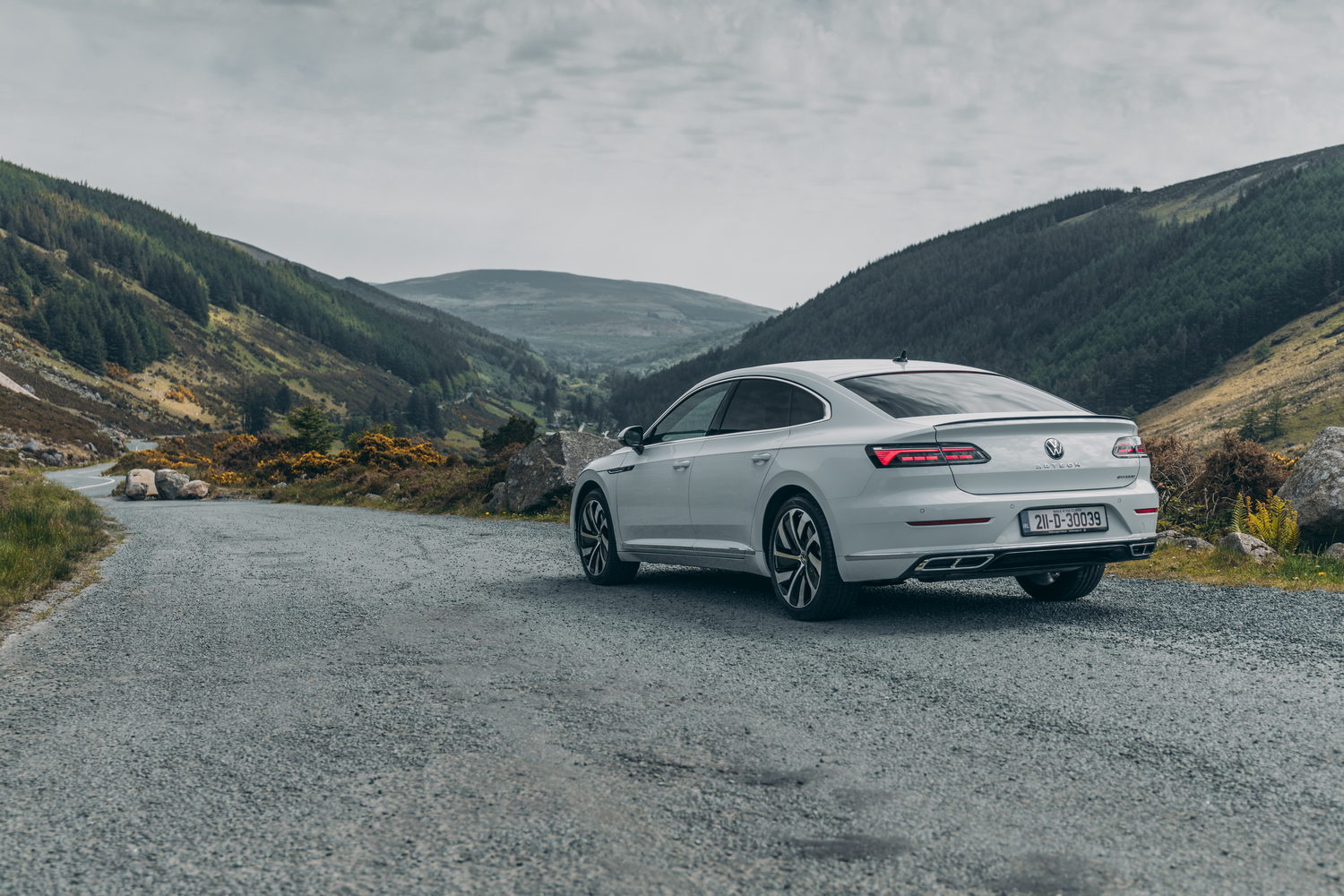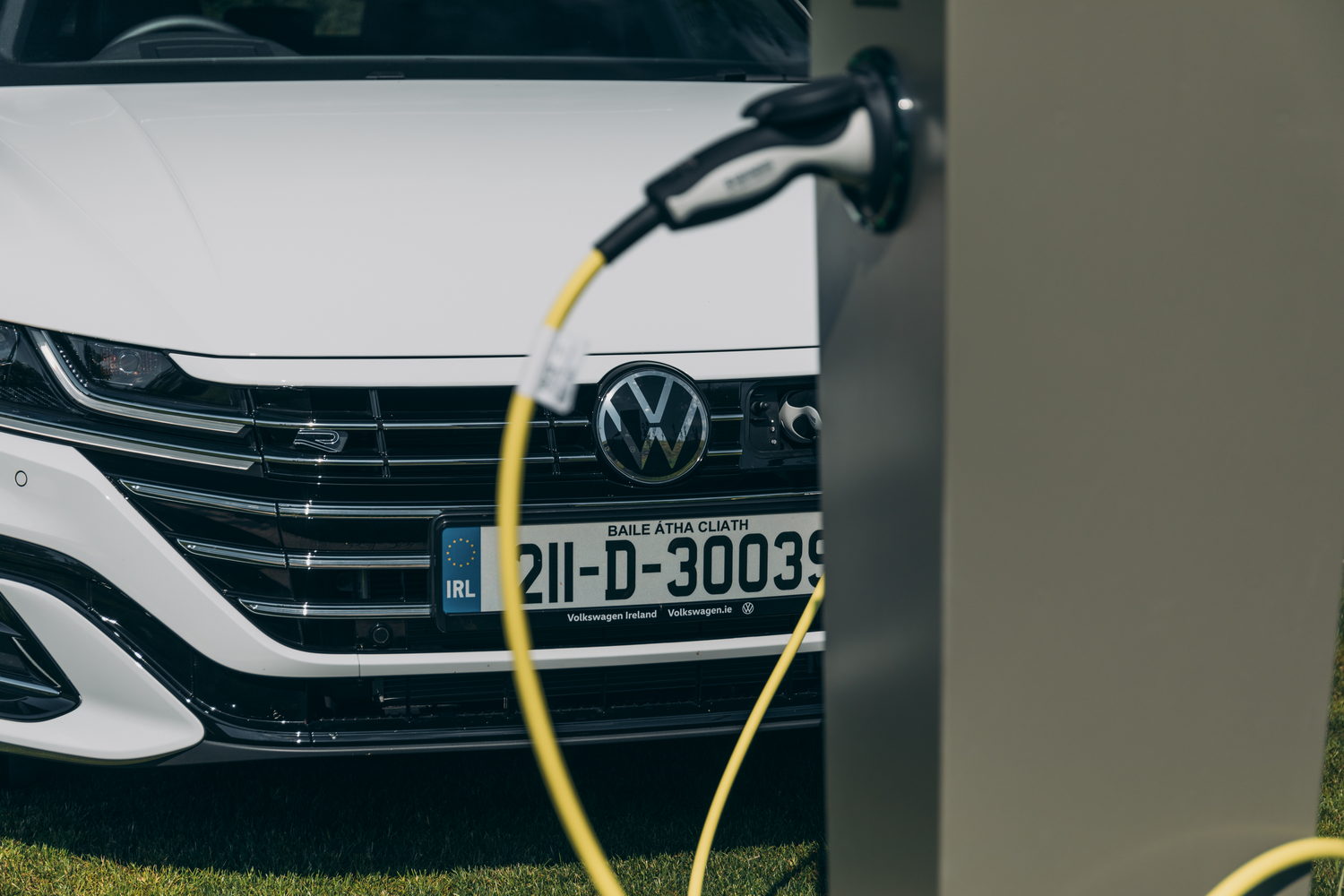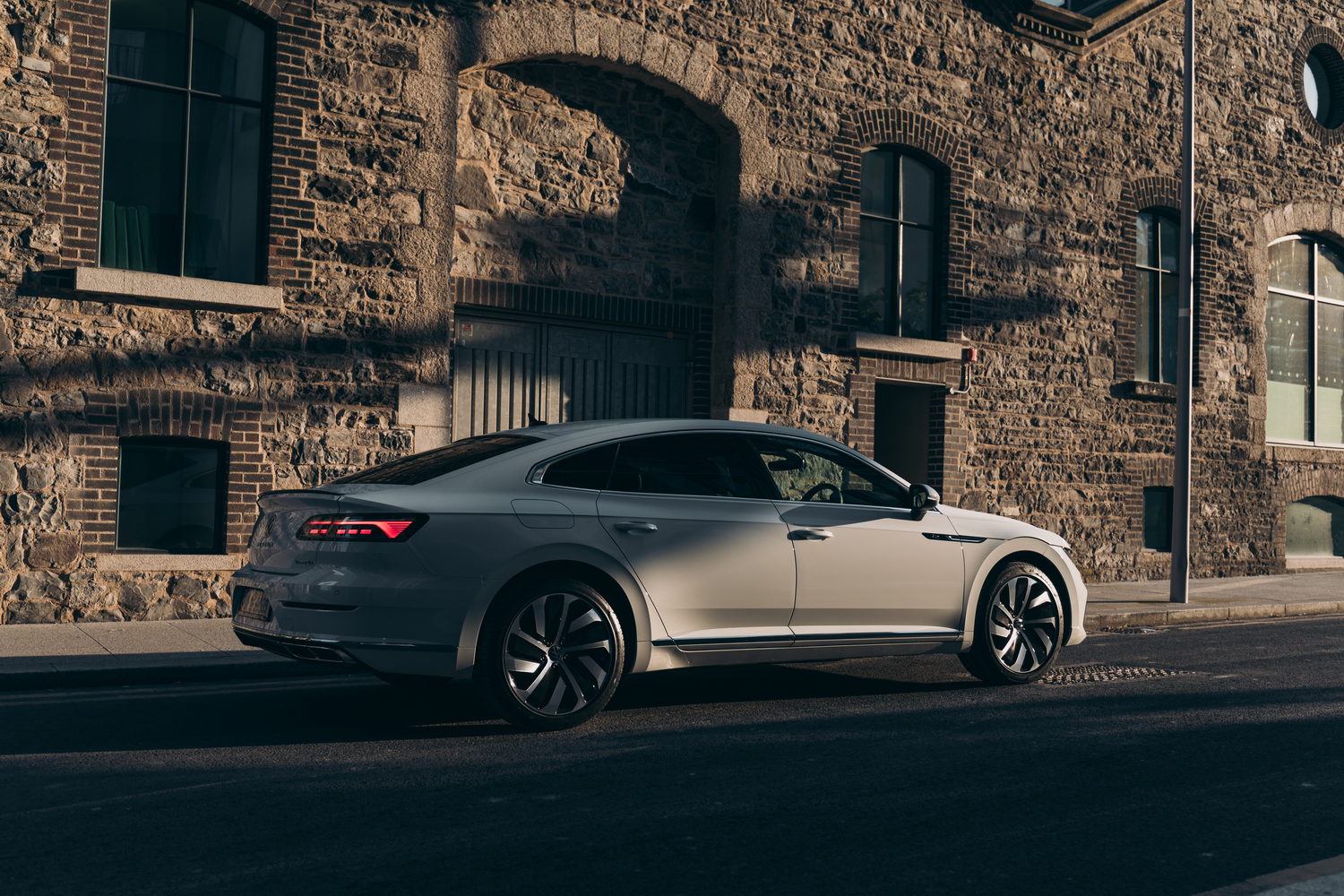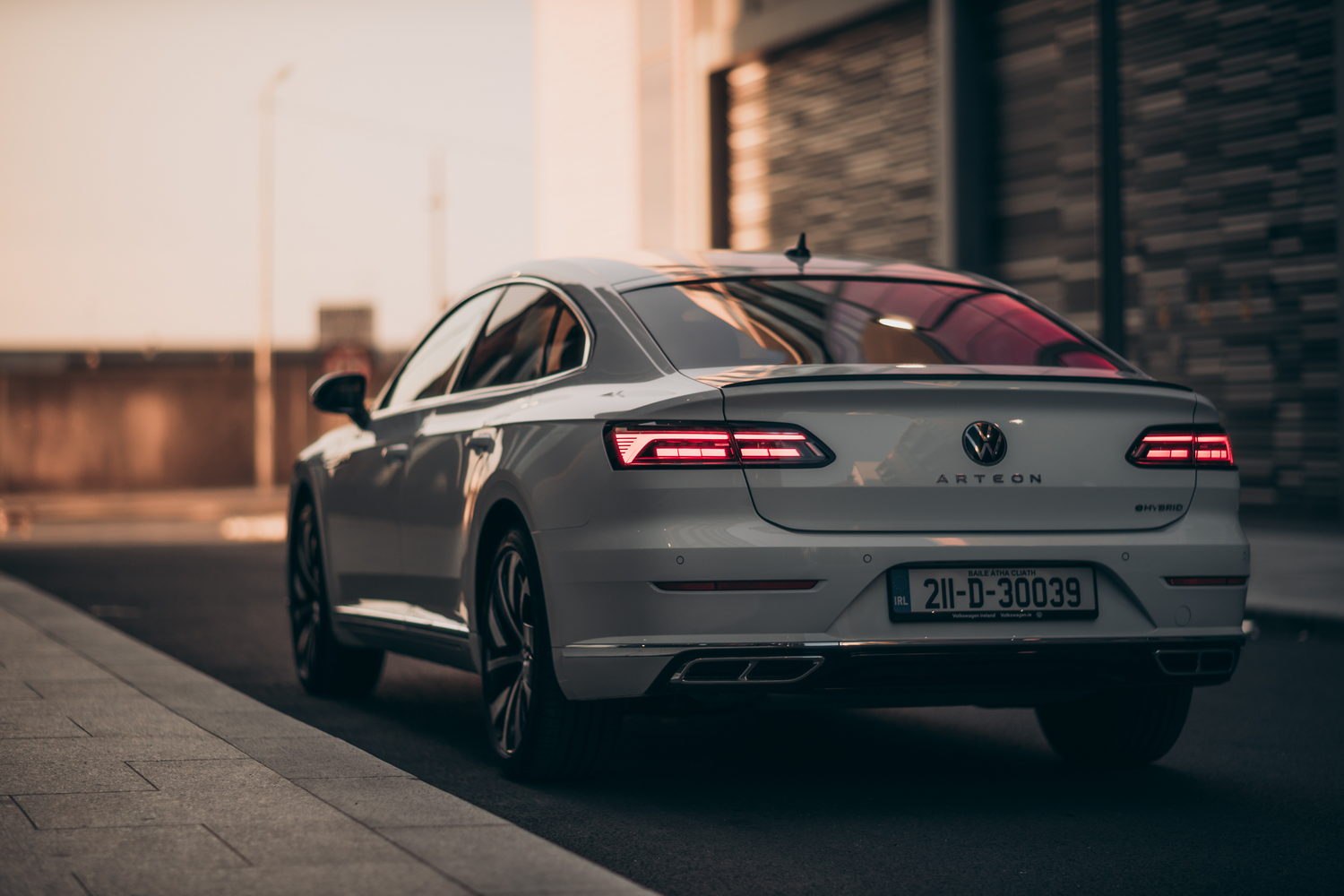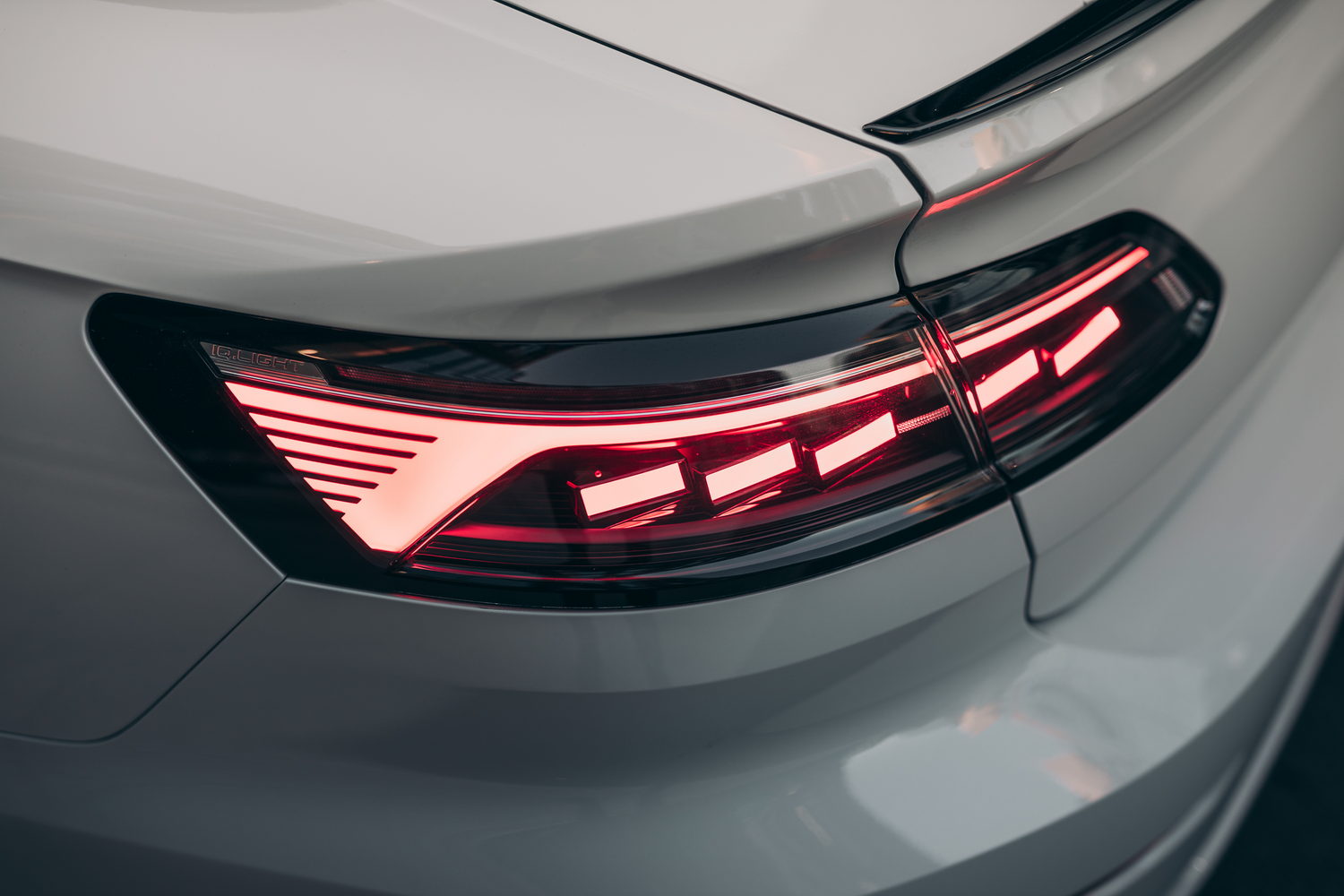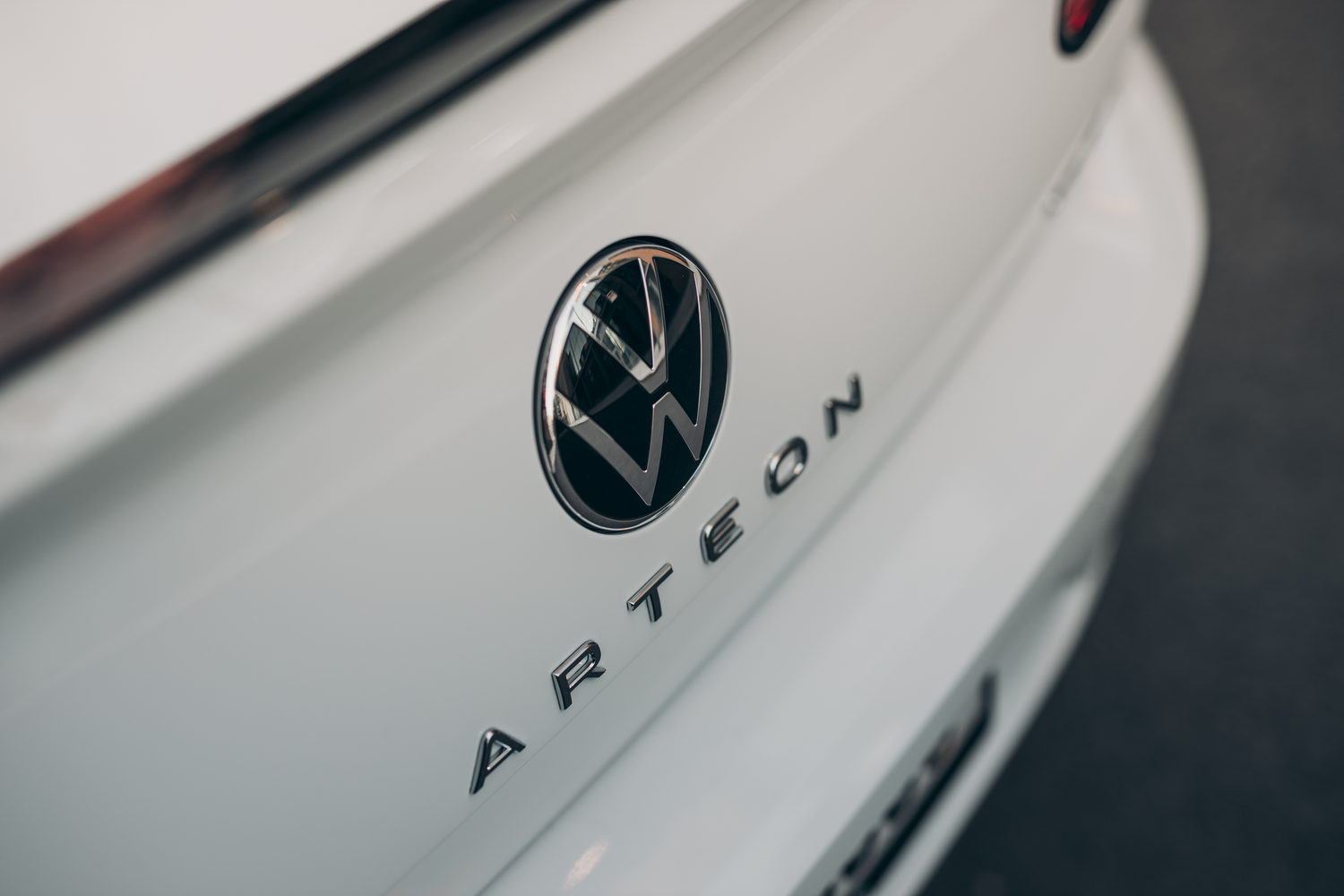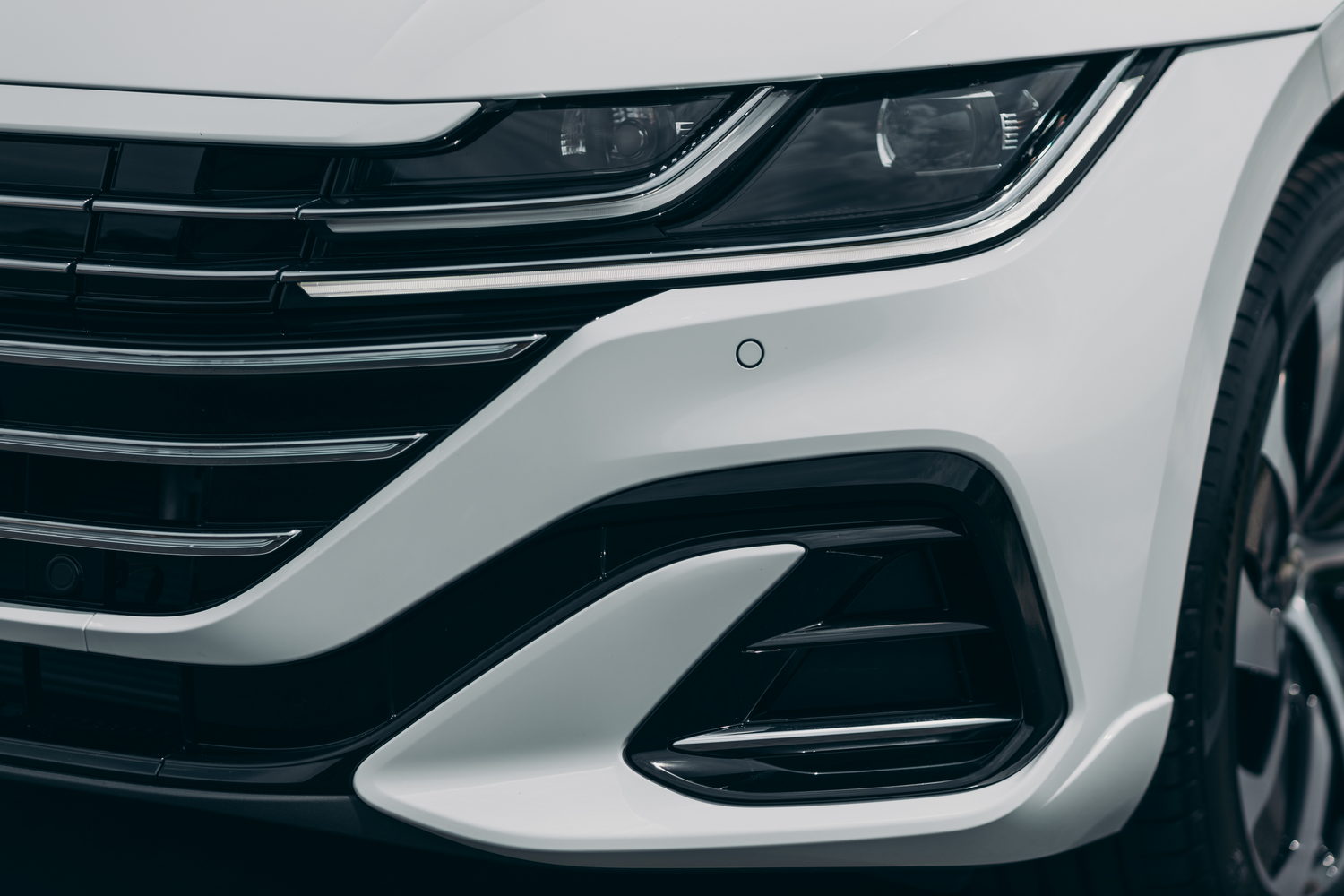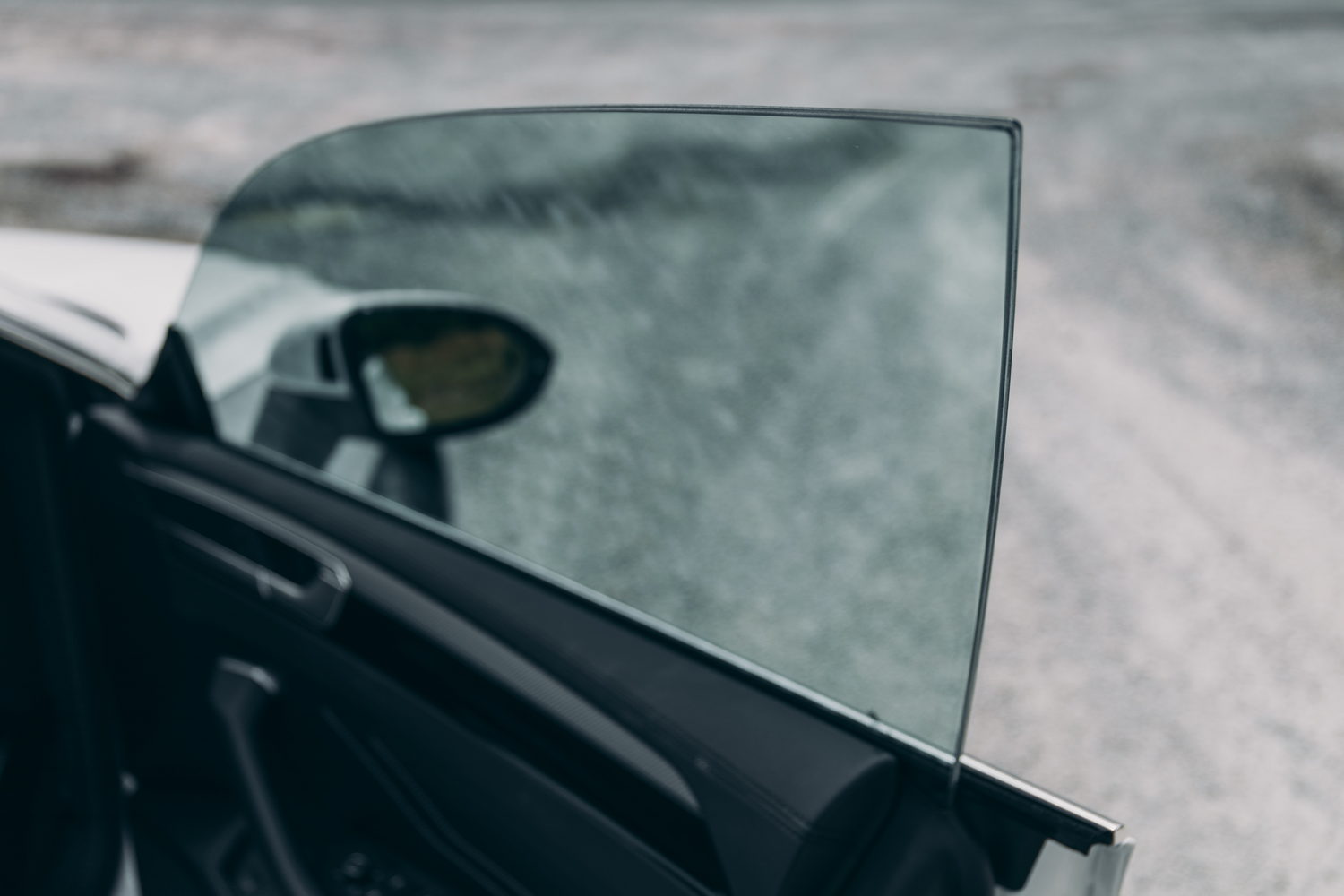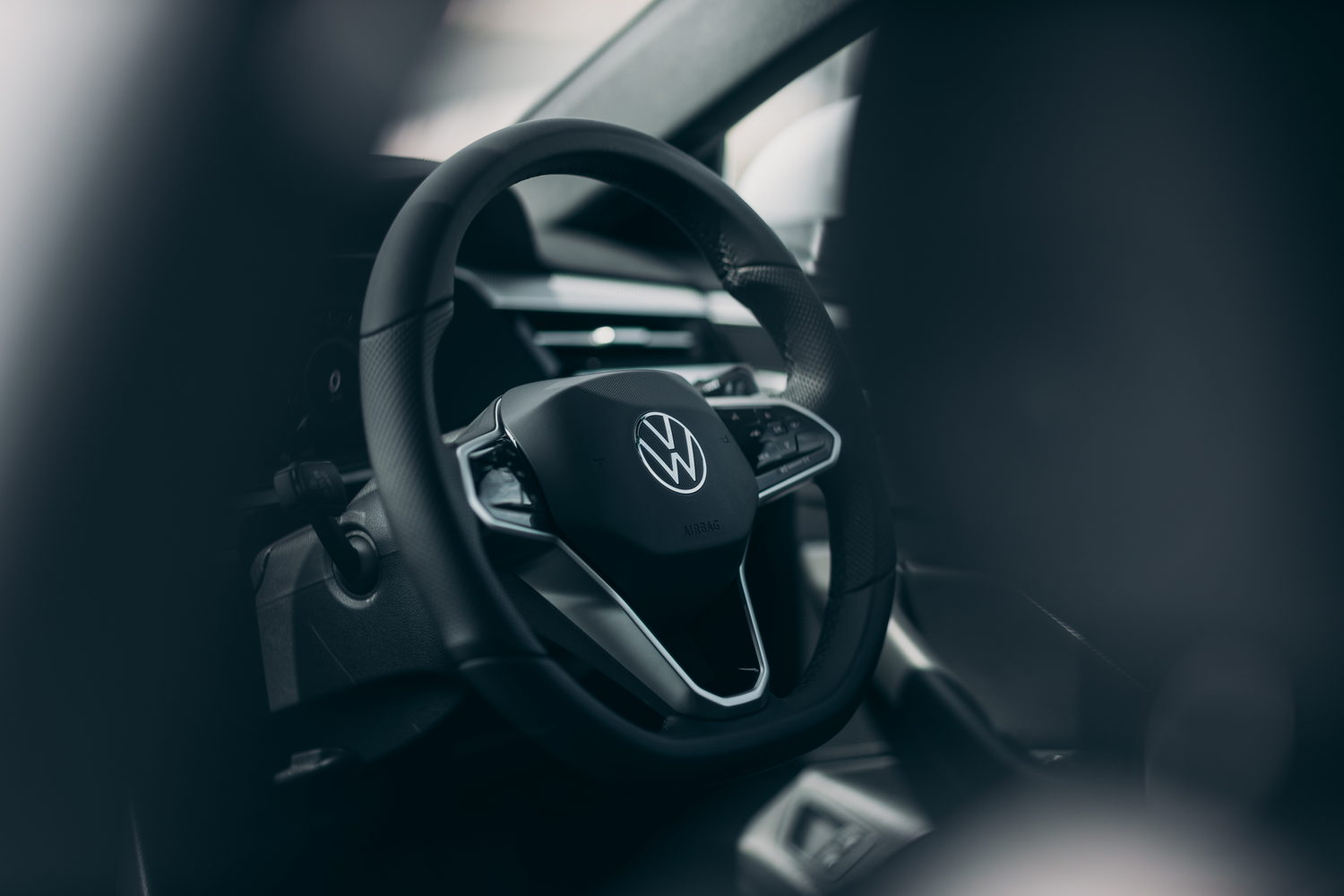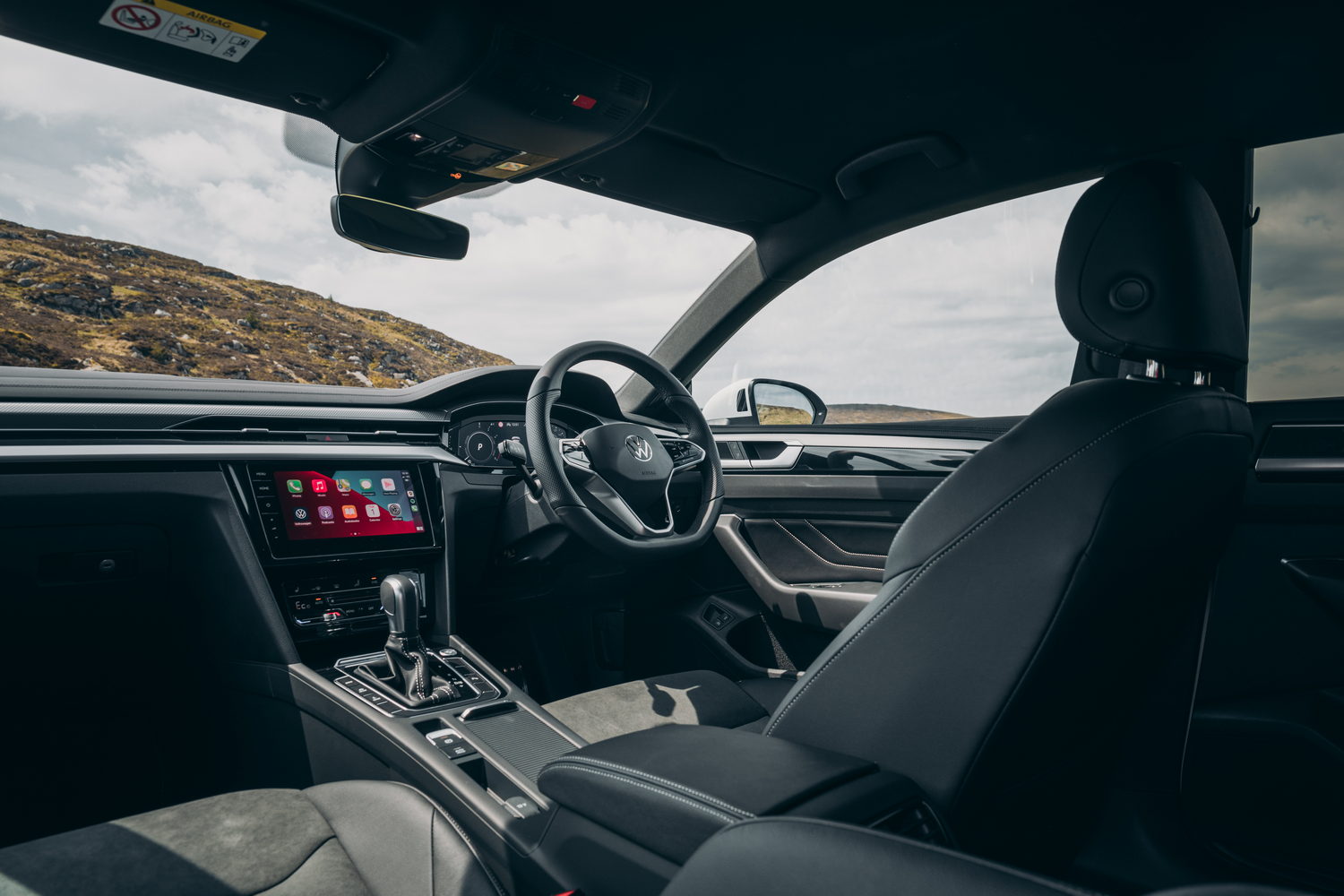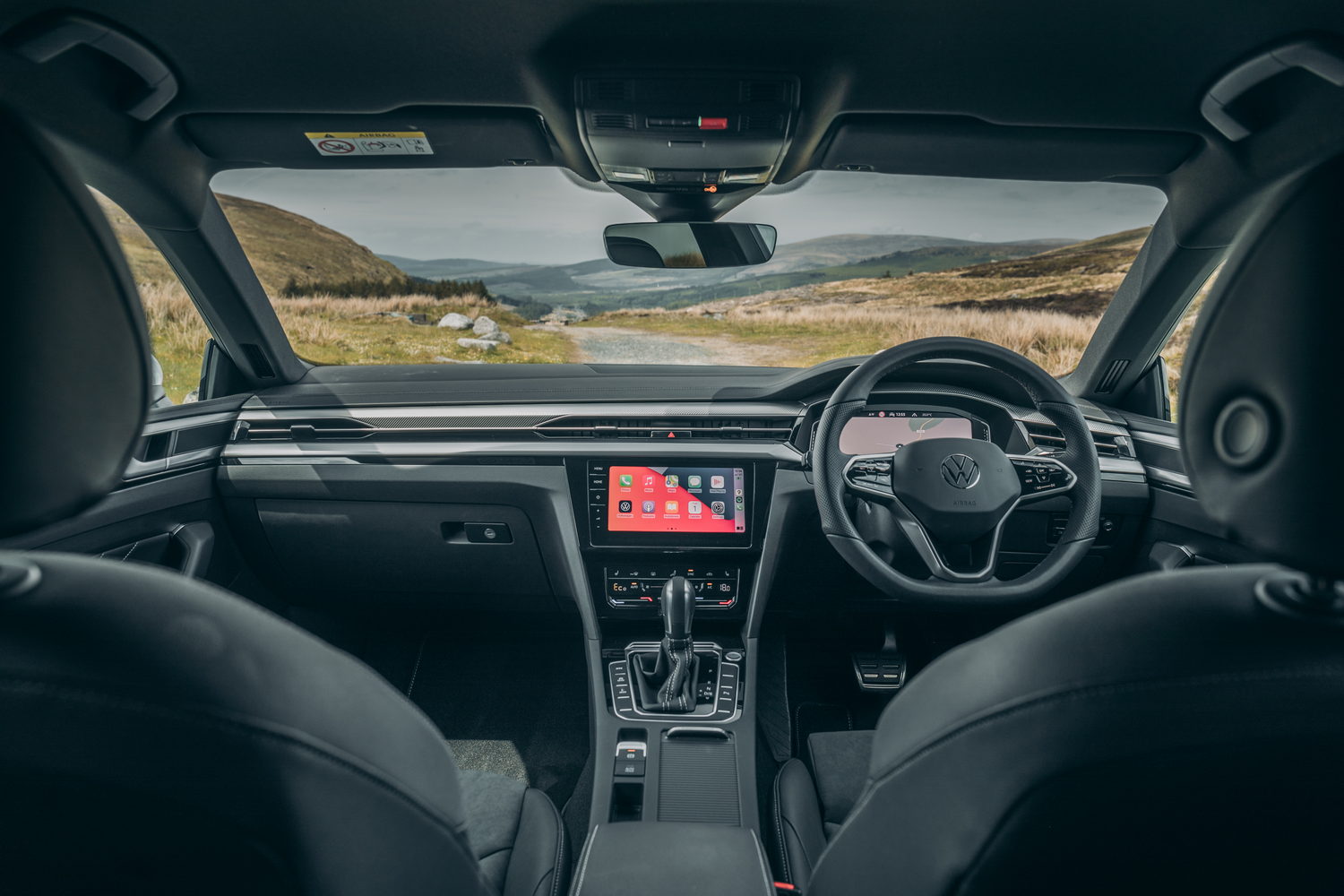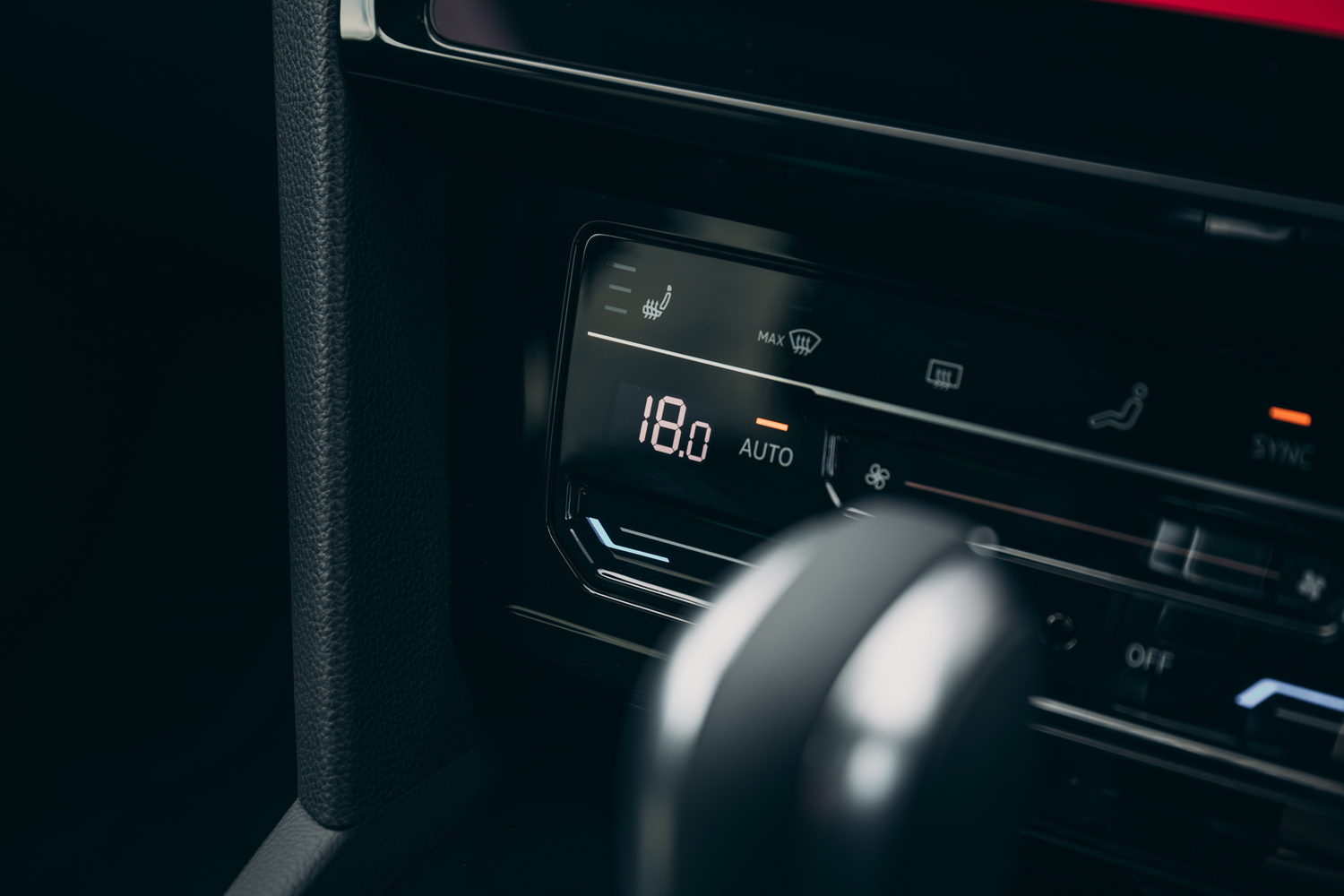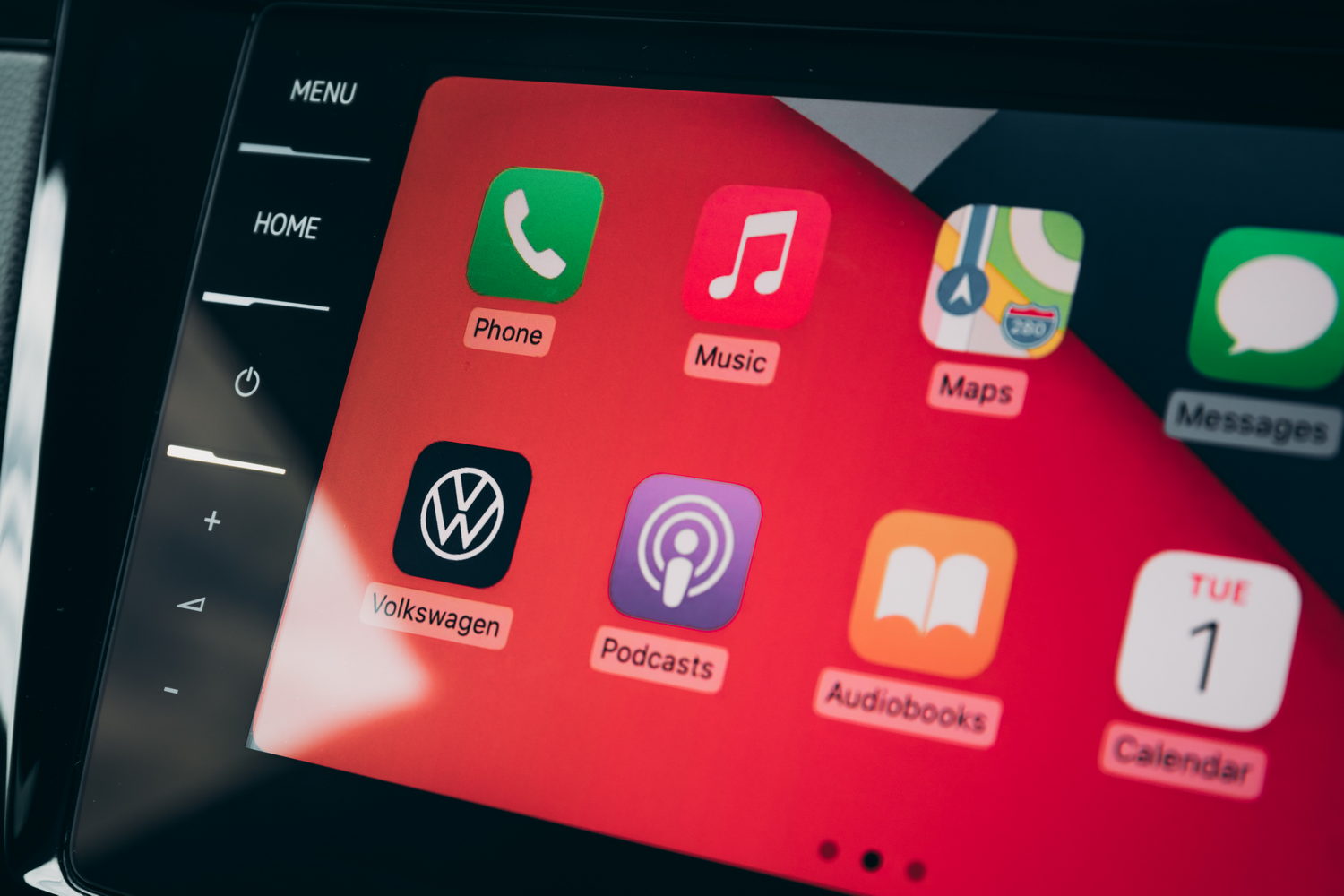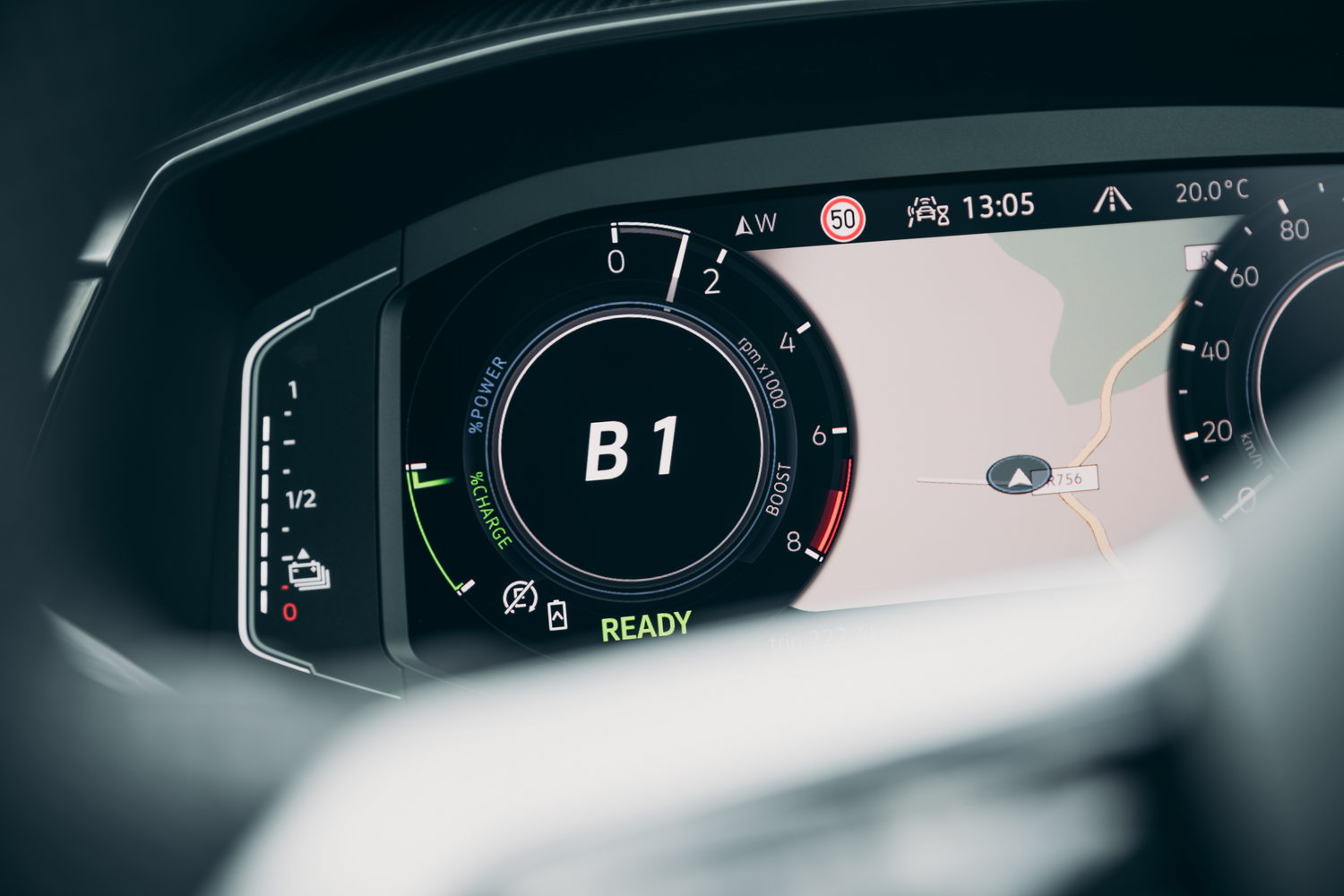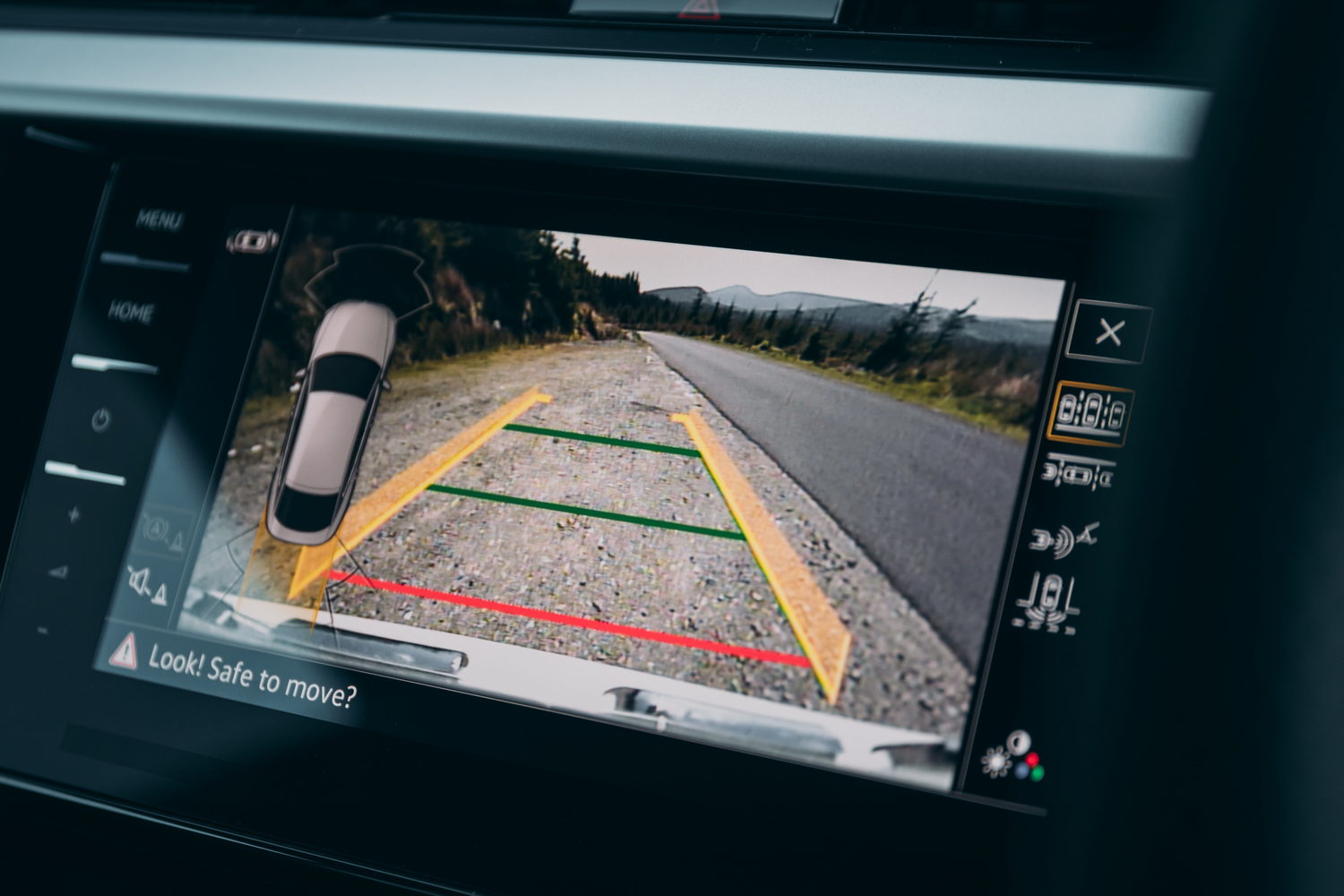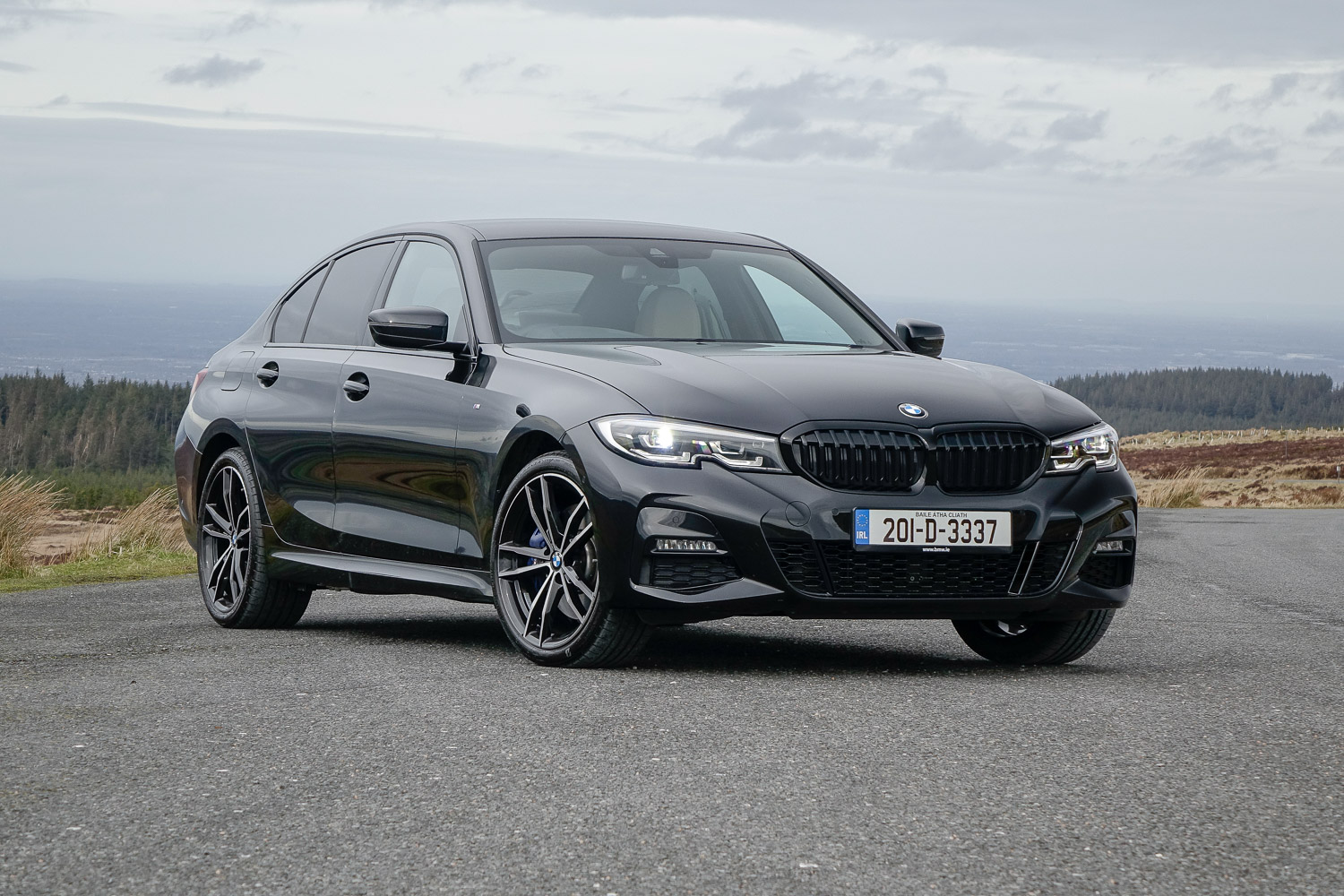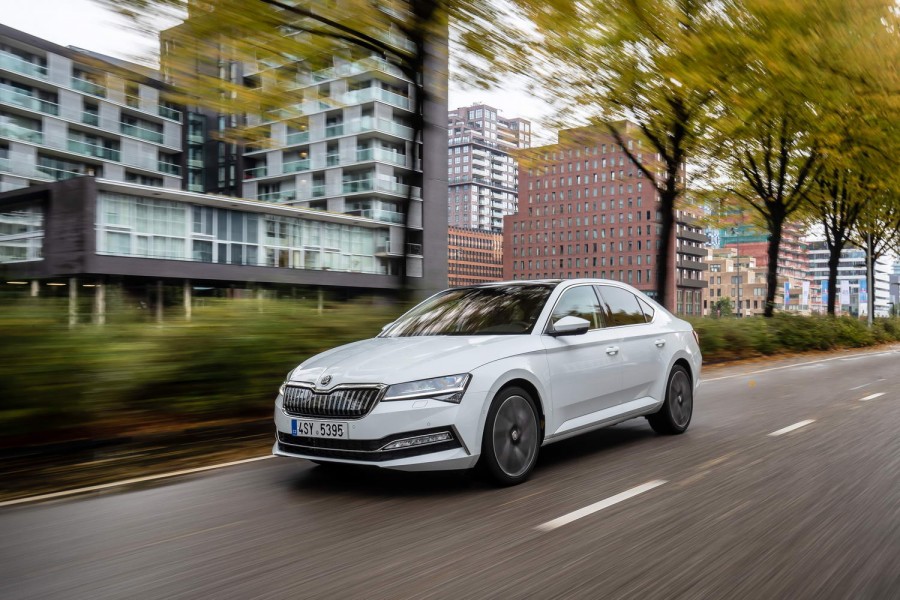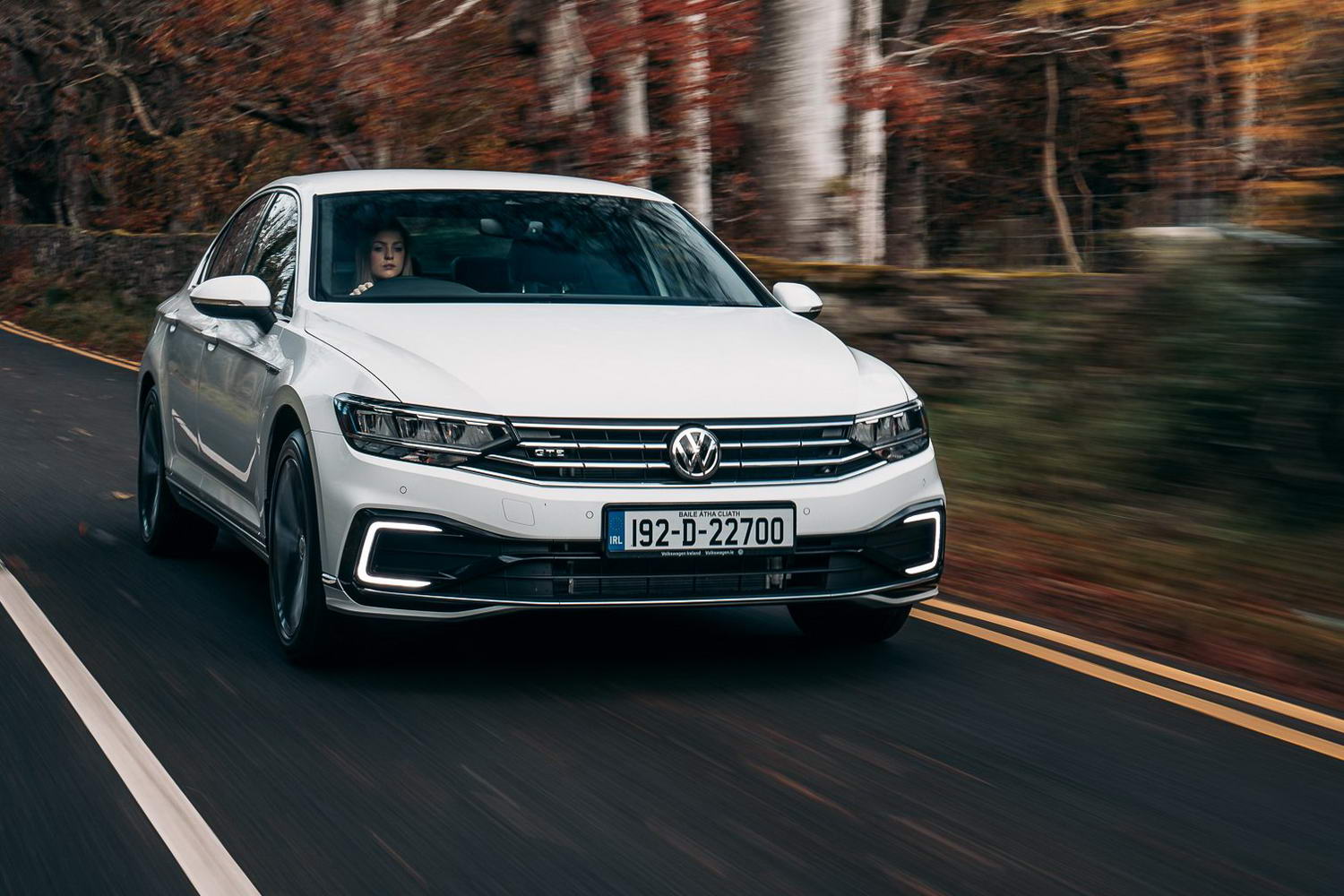Volkswagen Arteon eHybrid overview
Volkswagen's Arteon range is - alas - always going to be something of a minority interest in the Irish market, simply because it's so darned expensive. With a price tag that's nudging into Audi territory, who exactly is going to buy this posh Passat? Well, hopefully someone will because a car this handsome (and practical) deserves a wider audience. Does the addition of plug-in hybrid power make the Arteon a more desirable car for Irish drivers?
The Volkswagen Arteon model range
The Arteon line-up is pretty simple - you can choose from two diesel engines (150hp or 200hp versions of the same 2.0-litre TDI four-cylinder unit), the plug-in hybrid eHybrid model we're testing here, or the range-topping 320hp 2.0-litre petrol turbo Arteon R.
Once you've decided on your engine, you then only have to choose between the five-door fastback version or the rather lovely five-door 'Shooting Brake' estate.
Prices start from €50,560 for an Arteon 2.0-litre TDI 150hp in Elegance trim. Next up is the same engine in R-Line trim for €54,360, or the 200hp 2.0-litre TDI as an R-Line for €59,655. You can upgrade to the Shooting Brake 150 TDI Elegance for €51,125; the 150hp TDI R-Line for €55,945; or the 200hp TDI R-Line for €62,160.
If you want the eHybrid, then it's €53,360 for the fastback in Elegance trim, or €55,145 for the R-Line version. The Shooting Brake eHybrid costs €54,800 for the Elegance model, or €56,845 for the R-Line. Bear in mind though that those prices are quoted up to the end of December, after which the Irish Government is withdrawing the €2,500 purchase grant for plug-in hybrid cars, so adjust your financial horizons accordingly.
Finally, the top-spec Arteon R costs a fairly senior €83,595, or €86,475 as a Shooting Brake. All of those prices are the quoted recommended on-the-road price.
The standard equipment list for the basic Elegance model is spectacularly lengthy. The highlights include a DSG automatic gearbox for all models, high-end 'ArtVelours' seat trim, a leather-wrapped steering wheel, electric front seat backrest adjustment, heated, folding and auto-dimming side mirrors, acoustic glass, 18-inch alloy wheels, all-round LED lights, eight-inch touchscreen, digital instruments, auto high beam, rear parking camera, three-zone climate control, adaptive cruise control and an eight-speaker sound system. It's worth noting that if you buy the eHybrid model in Elegance trim, you get an automatic upgrade to the bigger 9.2-inch touchscreen, too.
R-Line models get adaptive suspension, a head-up display, a chunky exterior body kit with R-Line badges, upgraded seats with 'Vienna' leather, silver dashboard inserts, 30-colour ambient lighting, 19-inch alloy wheels and stainless steel scuff plates on the door sills.
CO2 emissions dip as low as 26g/km if you're buying the eHybrid, depending on which alloy wheel option you pick, rising to between 126g/km and 146g/km for the diesels, or 207-209g/km for the Arteon R.
Volkswagen currently has a 3.9 per cent APR interest rate for its PCP deal on the Arteon, with monthly repayments starting from €529, but of course we'd advise you to check out the VW Ireland website for the most up-to-date deals.
The Volkswagen Arteon eHybrid interior
Because our test car was a high-spec R-Line model, it came with 'piano black' and aluminium effect dashboard trim, and that's a real shame. The combo makes the Arteon's otherwise lovely cabin look and feel a bit too cold and clinical - maybe it's the old man in me, but the warmth of the wood trim that you get in Elegance models looks much more welcoming.
The rest of the Arteon's insides are pretty close to unimpeachable. For a start there is a vast acreage of space. The Arteon sits on a massive 2,839mm wheelbase (the Passat's is 2,709mm, the Skoda Superb's is 2,841mm) so rear legroom, in spite of the Arteon's billing as a four-door coupe, is actually more akin to a limo. Even with the swoopy roofline, rear headroom is decent so even if you regularly carry tall people in the back, they'll find the Arteon painless. That extra length also makes loading child seats into the back a doddle, helped by the standard-fit ISOFIX points in the outer rear positions.
That's not all for rear-seat passengers - they also get their own temperature controls, heated seats, a USB-C socket, a 12-volt socket and, praise be, a 230-volt domestic socket too (although it's a European-style two-pin one so you'll need an adaptor). It's enough to almost make the front of the Arteon feel a little plain...
Plain, but very comfortable. The seats, wrapped in expensive-feeling leather, are superb - they're VW's 'ErgoComfort' chairs, so hugely soothing on a longer journey. Obviously, this being a Volkswagen, it's easy to play spot-the-Polo-switches, which can start to feel a little galling in a car costing well north of €50,000. That goes equally for the fact that the dashboard is lifted more or less entirely from the humbler Passat saloon, but the Arteon's excellent levels of fit and finish do compensate somewhat.
On the centre console, there are two storage areas - one is small-ish, open and the perfect size for a toll-road tag; the other has a Venetian-blind cover, contains two cupholders and is pretty big. There's also a useful storage cubby under the front seat armrest with more USB sockets. In front of the DSG gear selector, there's another lidded storage area that contains the wireless phone charging pad.
The main digital instruments are standard VW fare, which means that they're clear and crisp, and the display can be adjusted - in fairly simple ways - to suit your tastes. The big 9.2-inch touchscreen comes with wireless Apple CarPlay and Android Auto, looks impressive, has an endless series of functions, but as with most current VW screens, can be infuriatingly fiddly to use at times. The menu layout, especially for more commonly-used items, could certainly stand being simplified while the lack of a physical volume control for the stereo is maddening. At least the Arteon's heating and air conditioning controls aren't on the screen - as with the recently facelifted Tiguan, they're on a small touch-sensitive panel that's pretty straightforward to use. Hopefully VW will shortly relent and fit the same panel to the likes of the Golf, ID.3 and ID.4...
The head-up display looks a little old-fashioned, as it projects onto a tiny pop-up 'monocle' screen that emerges from the top of the instrument binnacle, but it's effective and certainly useful.
As is common with most plug-in hybrid models, the boot suffers from having to package both a battery and, in this case, a relatively generous 50-litre fuel tank. It's not too bad, in this instance. The standard Arteon has 563 litres of boot volume with the seats up, so it has space to burn. With 455 litres on offer, the Arteon eHybrid clearly has less luggage room, but it's still pretty practical, and the big, electrically-powered hatch opens wide, which makes loading up a doddle. There is a sensor under the bumper, which allows you to open the boot by waggling your foot under it, but as ever with such systems it's a little hit-and-miss. There's a small under-floor storage area too that is handy for stashing charging cables, and the only demerit here, really, is that the rear seats don't fold fully flat, and are only split 60:40, rather than a more useful 40:20:40 (although there is a ski-hatch for long, narrow items).
The Volkswagen Arteon eHybrid driving experience
A plug-in hybrid lives or dies on its electric performance, and its long-range economy once the battery is drained. Thankfully, the Arteon performs really rather well in both arenas. Its low and sleek shape must surely contribute here, because we've been disappointed before by plug-in hybrid SUVs whose performance just falls apart if you dare to exceed their short electric-only ranges.
The Arteon didn't hit the heights of the official maximum of 62km of electric range in our hands, but in its defence, the weather was chilly, which affects the battery chemistry, and we had the heater and heated seats going. We still managed a decent 45km out of it in urban driving, and the Arteon feels good as an electric car - suitably smooth and easy-going, which bodes well for its eventual replacement by an ID-badged model.
Better yet, in the here and now, it's properly economical on a long run. Motorways don't faze the Arteon eHybrid when it comes to fuel savings, and you can just about squeeze 5.7 litres per 100km out of it on longer runs if you're gentle. Around town, on a depleted battery, consumption slips above the 7.5 litres per 100km mark, but even that's quite impressive compared to some rivals. Medium-length drives, using a combination of battery and petrol power, should see you on the sunny side of 4.5 litres per 100km. That's pretty impressive when you consider that the Arteon's hybrid system uses VW's ancient 1.4-litre petrol turbo engine, not the far more modern 1.5-litre TSI unit. VW has kept the old engine going in hybrid form simply because it's cheaper to make. In similar fashion, the DSG automatic gearbox is down to six speeds, from the usual seven in other models.
Thankfully it doesn't seem to overly affect the Arteon's performance. It's not a car you're going to extend to the red line for fun, it must be said. Press the button marked GTE, which is the Arteon's Sport mode, and it accelerates briskly (218hp is not to be sniffed at, in fairness), but this is a car that feels far more natural when you switch back into Eco mode, sit back in the comfy seat and just cruise.
That's when you come across the Arteon's trump card - its refinement. It really is a very quiet and smooth car, especially when you remember how difficult it is to get frameless door glass to seal properly at higher speeds. Thanks to the 50-litre fuel tank and the decent long-haul economy, you can tick off mile after mile in the Arteon in excellent comfort and near silence. It's a lovely way to travel.
That's backed-up by a ride quality that clearly benefits from the long wheelbase, and which is largely very good, but occasionally upset around town by larger lumps and speed ramps.
Handling? Well, the Arteon has some, and with the adaptive suspension set in GTE mode it will sprint through a series of corners with reasonable athleticism. The steering isn't especially talkative, though it's weighting is good, and there's nothing wrong with the Arteon's front-end grip and traction. It's just not a car that feels particularly enthusiastic about that kind of thing - better to sit back and let the refinement do its thing.
Rivals to the Volkswagen Arteon eHybrid
The Arteon arguably suffers a bit from having too many in-house rivals. After all, under the skin it's basically a mixture of Passat and Skoda Superb, and it's inescapable that you can have either of those cars, with lots and lots of options, for a lot less than the cost of this Arteon. Indeed, a Superb Sportline in iV plug-in hybrid spec undercuts the cost of our test Arteon by €3,000.
A Passat GTE - mechanically identical and pretty much the same to drive - costs almost €6,000 less. Or, you could have an Audi A5 Sportback for very similar money. OK, so there's no plug-in hybrid Sportback, and it'll be a fairly basic model (not to mention small in the back seats), but you'll have the four rings on your driveway and that counts for a lot. Looking outside the VW empire, there's the BMW 330e, which combines plug-in efficiency with entertaining handling, or the incoming new Mercedes C 300 e, which has an electric range of more than 100km, and which can fast-charge from a 50kW DC charger.
Our verdict on the Volkswagen Arteon eHyrbid
The Arteon eHybrid has two problems. First up, it's expensive even by plug-in hybrid standards, and has serious rivals from within the Volkswagen empire. Second, its 1.4-litre hybrid system is based on an older engine and a relatively small 13kWh battery, so it's about to be made obsolete by incoming, more modern setups such as that offered by the Mercedes-Benz C-Class. However, what the Arteon has on its side is charm - buckets of the stuff. It's handsome, practical, enormously relaxing to drive and properly frugal on a long run. All of which counts for a lot, but does it count for enough to get you past that price tag?
What do the rest of the team think?
It's a shame, in a way, that the Arteon's biggest hurdle to success in Ireland may be badge snobbery. Neil mentioned that buyers might prefer to have an inferior Audi A5 Sportback on the drive, and he's possibly right, but the Arteon is a very different car. It's far more practical, huge in the back seats and it looks astoundingly good. Most buyers will appreciate that the Arteon's chassis isn't designed to take BMW on at its own game and it is utterly brilliant on the motorway. No, the hybrid system isn't the newest and no, it's not cheap, but I think it justifies its price tag. Saying that, you should buy the Shooting Brake.
Shane O' Donoghue - Editor

